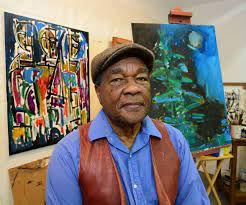David Driskell: The Artist Who Built Bridges, Not Walls
- Ryan Lago
- Aug 10
- 1 min read
Some lives don’t just influence art—they change the way it’s seen, studied, and remembered. Few figures have done this with as much depth and purpose as the man who helped elevate African American art to its rightful place in history.
With a career that spanned painting, collage, scholarship, curation, and teaching, his impact touched nearly every corner of the art world. In 1976, he curated the groundbreaking exhibition Two Centuries of Black American Art—a first-of-its-kind national survey that brought long-overdue recognition to Black artists in the United States. It wasn’t just an exhibition; it was a bold correction of the historical record.

His philosophy was rooted in the belief that art isn’t created in isolation. It exists within a rich web of culture, history, and identity. Art, for him, was a way of engaging with the world—not escaping from it. His approach emphasized connection: between artist and audience, past and present, personal and political.
That belief extended into every facet of his work. He advised major collectors like Bill and Camille Cosby, authored The Other Side of Color—a cornerstone text in African American art history—and inspired generations of artists and scholars alike.
“I like to think of my work as building bridges, not walls,” he once
said. And he lived by it. His legacy is one of inclusion, reflection, and transformation.
Today, the David C. Driskell Center at the University of Maryland continues to carry that legacy forward, preserving and promoting African American visual art and cultural scholarship.

Through his vision and dedication, he made sure Black artists would never again be seen as footnotes—but as foundational voices in the American story.




Comments